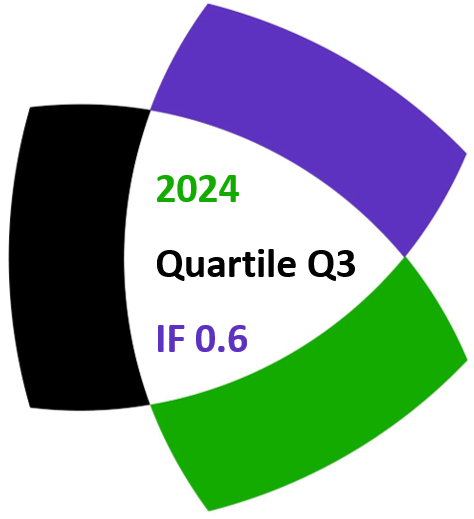Farzali Izadi
Notes on Number Theory and Discrete Mathematics, ISSN 1310–5132
Volume 21, 2015, Number 1, Pages 70–78
Full paper (PDF, 154 Kb)
Details
Authors and affiliations
Farzali Izadi ![]()
Department of Mathematics, Azarbaijan Shahid Madani University
Tabriz, Iran
Abstract
The aim of this article is twofold. The first aim consists of introducing several polynomials of one variable as well as two variables defined on the positive integers with values as congruent numbers. The second aim is to present connections between Pythagorean triples and the Pell equation x2 − dy2 = 1 plus its analogous counterpart x2 − dy2 = − 1 which give rise to congruent numbers n with arbitrarily many prime factors.
Keywords
- Congruent numbers
- Pell equations
- Pythagorean triples
- Diophantine equations
- Elliptic curves
AMS Classification
- Primary: 11D09
- Secondary: 11E16, 14H52
References
- Alter, R., Curtz, T. B., & Kubota, K. K. (1972) Remarks and results on congruent numbers, Proc. of Third Southeastern Conf. on Combinatorics, Graph Theory and Computing, 27–35.
- Alter, R., & Curtz, T. B. (1974) A note on congruent numbers, Math. Comp., 28(125), 303–305.
- http://www.aimath.org/news/congruentnumbers/
- Bastein, L. (1915) Nombers congruents, Intermediaire des Math., 22, 231–232.
- Bennett, M. A. (2002) Lucas’ square pyramid problem revisited, Acta Arith, 105, 341–347.
- Birch, B. J. (1968) Diophantine analysis and modular functions, Proc, Bombay Colloq. Alg. Geom., 35–42.
- Birch, B. J. (1970) Elliptic curves and modular functions, Symp. Math. 1st. Alta MAt., 4, 27–32.
- Burton, D. M. (2007) Elementary number theory, 6th ed., McGaw-Hill, New York.
- Chahal, J. S. (1984) On an identity of Desboves, Proc. Japan Acad. Ser. A Math. Sci., 60(3), 105–108.
- Coates, J., & Wiles, A. (1977) On the conjecture of Birch and Swinnerton-Dyer, Invent. math., 39, 223–251.
- Dickson, L. E. (1966) History of the Theory of Numbers Volume II, Chapter XVI.
- Feng, K. (1996) Non-congruent numbers, odd graphs and the Birch–Swinnerton–Dyer conjecture, Acta Arith., 75, 71–83.
- Gerardin, A. (1915) Nombers congruent, Intermediaire des Math., 22, 52–53.
- Gross, B. H., & Zagier, D. B. (1986) Heegner points and derivatives of L-series, Invent. Math, 84(2), 225–320.
- Guy, R. (1994) Unsolved Problems in Number Theory, 2nd ed. Sprniger–Verlag.
- Heegner, K. (1952) Diophantine analysis und Modulfunctionen, Math. Z., 56, 227–253.
- Koblitz, N. (1993) Introduction to Elliptic Curves and Modular Forms, 2nd ed. New York, Springer–Verlag.
- Lagrange, J. (1974/75) Nombres congruents et courbes elliptiques, Sem. Delange–Pisot–Poitou (Th´eorie des nombres), 16e annee, 1974/75, No. 16, 17 p.
- Lagrange, J., Construction d’une table de nombres congruents, Manuscript, Reims.
- http://mathworld.wolfram.com/CongruentNumber.html
- Monsky, P. (1990) Mock Heegner points and congruent numbers, Math. Z., 204, 45–68.
- Nagell, T. (1929) L’analyse indeterminee de degre superieur, Gauthier-Villars, Paris, 39, 16–17.
- Nagell, T. (1964, 2001) Introduction to Number Theory (AMS Chesea publishing 1964, V. 163) First AMS printing 2001.
- Noda, K., & Wada, H. (1993) All congruent numbers less than 10000, Proc. Japan Acad., 69, 175–178.
- Rosen, K. (2005) Elementary Number Theory and Its Applications, 5th ed., Addison–Wesley.
- Stephens, N. M. (1975) Congruence properties of congruent numbers, Bull. London Math. Soc., 7, 182–184.
- Top, J., & Noriko, Y. (2008) Congruent numbers and their invariants, Algorithmic NT, MSRI Pub., 44, 613–639.
- Tunnell, J. B. (1983) Classical Diophantine problem and modular forms of weight 3/2. Inv. Math., 72(2), 323–334.
- Zimmer, H. G. (1984, 1985) Congruent numbers – From elementary to algebraic number theory, NT ACM SIGSAM Bulletin archive, 18(4), 19(1), 54–62.
Related papers
Cite this paper
Izadi, F. (2015). Congruent numbers via the Pell equation and its analogous counterpart. Notes on Number Theory and Discrete Mathematics, 21(1), 70-78.


